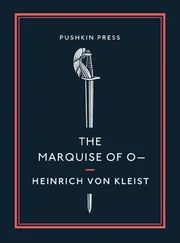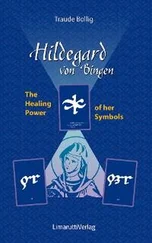I carry this picture in me forever: the big man on skates, clad in old-fashioned stylish garb, his bald head covered by a woolen ski cap, carefully holding the hand of the tiny girl. Her other hand is hidden in her little muff, and her face, pink-fresh from the bite of the cold, is framed by the fur-edged hood of her short coat. Thus they glide through the frost-sparkling world and draw into the black mirror of the ice the thin fishbone pattern of their traces, one in long and widely drawn sweeps, the other shorter and narrower. And all this flows together with the images of Cassandra and the lady in white who told me about it, even though in the picture I have preserved of her she is clad in black, magically arisen from the pool of memory like the shadowy apparitions that slowly took form on the photographic plates in the developing baths gently rocked by my father’s hands.
Czernowitz, where I was born, was the former capital of the former duchy of Bukovina, an easterly region of Carpathian forestland in the foothills of the Tatra Mountains, in 1775 ceded by the former Ottoman Empire to the former Imperial and Royal Austro-Hungarian realm as compensation for the latter’s mediation in the Russo-Turkish War; the Bukovina was at first allocated to the former kingdom of Galicia, but after 1848 it became one of the autonomous former crown lands of the House of Habsburg.
One can readily see that everything in this quick summary (with the exception of the town of my birth, whose name, in the course of historical evolution, underwent several changes — from Czernowitz to Cernăuţi to the present Chernovtsy) is designated as “former,” that is to say, not in the present, not truly existing — and this invests my birthplace with a kind of mythic aura, an irreal quality. It’s of no use to try to elucidate this mythic twilight by means of historical analysis. That the Austro-Hungarian monarchy has not existed since 1918 is well enough known, yet in Czernowitz-Cernăuţi, people acted as if they didn’t quite believe it. German remained the everyday language of most people, Vienna was the closest metropolis, and no one thought of denying it the rank of capital. Even though the reality of Shakespearean kingdoms like those of Galicia and Lodomeria had become more than questionable, people spoke of them as if they still existed; today they speak of the Bukovina as if it were still a political entity even though it disappeared as such in 1940.
In the days between 1919 and 1940, the Kingdom of Romania governed the Bukovina with a sovereign self-assurance based on the claim that it had been the Romanians’ archoriginal home soil, their Ur-land since the time of the Dacians — a claim that may be questioned. In Czernowitz-Cernăuţi, one did not go to the trouble to doubt it. In fact, that Romanian interlude was hardly more than a fresh costume change in a setting worthy of operetta. The uniforms of Austrian lancers were supplanted by those of Romanian Roşiori, infantry wasn’t worth noticing much anyway, and the whole transformation was given no greater weight than the one accorded the changing scenery at the municipal theater between Countess Maritza and The Gipsy Baron or The Beggar Student . It took barely twenty years before the black-and-yellow on the border posts and the doors of the tobacco-monopoly shops was painted over with the blue-yellow-and-red of the new sovereigns and the double eagle on the steeples of public buildings was supplanted by the Romanian coat of arms. Then, in 1940, Cernăuţi became Chernovtsy and the whole Bukovina became something “former’’; nominally it no longer existed, cut in two by a state treaty between the Third Reich and the Soviet Union, concluded in cavalier disregard of the legend about the Romanian Dacians. The region south of the Siret River, together with Moldavia, was allocated to the present People’s Republic of Romania, while the northern part, with Chernovtsy, fell to the Soviet Republic of the Ukraine. As a result, Chernovtsy was no longer a capital, since the capital of the Ukraine is Kiev.
I used to hesitate when asked about my place of origin, and the reasons for this demurral were twofold: first, because the admission that I came from Czernowitz invariably drew the irrepressible comment, “Ah, I see…” This is not limited to former Austro-Hungarians, for whom the very name Czernowitz stands for a standard set of concepts: Czernowitz seems to be well-known everywhere as the setting of most Galician-Jewish jokes and as the breeding ground of an unmistakable type of individual. My hometown gained world fame as the melting pot for dozens of ethnic groups, languages, creeds, temperaments and customs, fused and refined there into a quintessential species of “Slaviennese” rapscallions. To what extent it is an advantage to be counted among them is a moot point. All my life I did what I could to make the best of it. The poet Paul Celan, who said of Czernowitz that it was a place where people and books had lived, has done better than I in this respect.
The second reason for my hesitation is again twofold: of the three score and fifteen years of my earthly existence I spent only the first ten in Czernowitz. After that I visited the place only sporadically — alas! for there was much to be learned there. The last time I had been there was in 1936, when I was twenty-two, fifty-three years ago. Over such a time span the original markings fade. But what contributed even more signally to my alienation was the increasing “erstwhileness” and irreality of my origins. It began to sound to me as if I had invented Czernowitz — and with it, myself.
The fact is that I actually did invent my own Czernowitz. Leaving aside my book Maghrebinian Stories, which I could not have written had I not been born and raised there, the city itself plays a fatidic role in three other of my books: significantly in An Ermine in Czernopol (published in English under the title The Hussar) ; marginally in the novel Memoirs of an Anti-Semite; and of course decisively in this one. I did not intend in any of these to write a travel guide to the actual Czernowitz-Cernăuţi-Chernovtsy, but rather to describe a mythical topos . Especially in An Ermine in Czernopol, the very title indicates that we are dealing with a literary transposition, the remembrance of the town of my childhood serving merely as a scaffolding on which to model a mythic site in which mythical events take place.
But we know that memory is anything but reliable. It selects at random what it wishes to store, discards what is not to its liking, underscores the emotional, sublimates and distorts. Thus I contributed both intentionally and unintentionally to the growing loss of reality for my place of origin, adding the odium of implausibility to its — and thereby also my own — already legendary reputation for shifty unreliability.
This hardly disturbs me insofar as the ethical question of truthfulness is concerned. I am a writer and as such I have not only the right but also the duty to raise the level of reality, as I see it, to the very point where it threatens to tip over into the unbelievable. But if one seeks to achieve this by drawing — as I do — on the autobiographical, paraphrasing and transforming it and inserting it into fictional and hypothetical happenings, then one runs the danger of falling into one’s own trap, with the result that one no longer knows what is real and what is not. This exceeds the moral sphere and comes dangerously close to schizophrenia.
But since I am a conscientious person, I recently chanced the adventure of confronting my invented Czernopol with the factually existing Czernowitz still surviving in the present-day Chernovtsy. This was all the more daring an undertaking since I had given not only myself but my hometown as well half a century in which to develop into something entirely unforeseeable. Naturally I had to assume that the Ukrainian Chernovtsy of 1989, cleansed of its hodgepodge of Swabian Germans, Romanians, Poles, Jews, Prussians, Slovaks and Armenians, could no longer be the Czernowitz or Cernăuţi that I had last visited in 1936. Likewise I had to assume as out of the question that Chernovtsy should have escaped the hybrid growth which, in the past few decades, has transformed all human settlements throughout the world into teeming excrescences — especially not this chameleon among cities, which the popular Austrian writer Karl Emil Franzos called around 1890 “a village of Huzules with pseudo-Byzantine, pseudo-Gothic and pseudo-Moorish buildings,” and somewhat later “a Black Forest idyll” and ultimately “Little Vienna.” I was sure that much of what I recalled would have to have been destroyed according to pseudo-American and pseudo-Russian notions about redesigning the future; it was likely that I would have to dig up large portions of my remembered past or else leave them permanently under tons of reinforced concrete. Equally, the erstwhile capital of the erstwhile Bukovina had meanwhile become a Soviet backwater, in which most probably dilapidation and squalor would be visible everywhere.
Читать дальше












